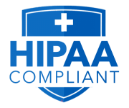Are you holding onto stacks of old business documents, manuals, or publications? Converting these to modern PDF files can not only streamline your operations but also safeguard your business’s valuable history. This comprehensive guide will walk you through the process of digitizing your publications with precision and ease, utilizing book scanning service and book digitizing service.
Step 1: Identify Business Objectives
First, consider what you hope to achieve by digitizing your publications. Are you looking to improve access for remote teams, or is it about preserving valuable records for future reference? Services like book preservation services and digital book conversion can be tailored to your needs. Setting clear objectives from the start is crucial as it ensures that the digitization process aligns with your business goals, providing a return on your investment that extends beyond simple document conversion.
Step 2: Select the Appropriate Service
It’s important to choose the right book scanning service for your business needs. 2 types of book scanning – Destructive & Non-Destructive. Destructive means that we remove or cut the bindings so the pages can be sheet fed. Non-destructive means that the book is left in its original condition and the pages are scanned on a specialized overhead book scanner and remain undamaged. Destructive is less expensive because it is quicker. Non-destructive is more labor intensive.
Step 3: Document Preparation
Make sure your documents are completely ready for scanning by removing any staples or bindings that could cause issues. They should also be thoroughly clean. This is essential to avoid damaging your documents during the scanning process and ensures the consistent quality of the digital output. Proper preparation is absolutely key to a smooth scanning process and consistently high-quality results, ensuring that your business’s documentation is handled with the utmost care and precision.
Step 4: Professional Scanning
Hire a professional book scanning service that uses advanced scanning technology to achieve high quality. These services can efficiently manage large volumes of documents without losing any details or color accuracy. They convert your physical documents into high-resolution digital formats that are perfect for meeting modern business needs. This step ensures that your documents are digitized efficiently, making them easy to access and seamlessly integrate into your current business processes.
Step 5: Post-Scanning Quality Assurance
After scanning, each digital file is checked thoroughly for quality. Book scanning solutions come with software that can enhance image quality, align text correctly, and improve readability. This ensures that your digital documents meet your business’s standards. High-quality digital documents are crucial for maintaining professionalism and functionality across your business’s digital platforms.
Step 6: Converting and Enhancing PDFs
Next, your scanned images are converted into PDFs. This process often includes adding searchable text through OCR technology, which makes the documents more usable within your business. This step is vital for creating files that are easy to navigate and use, making them perfect for different business applications. It’s all about making your documents as useful and accessible as possible.
Step 7: Implementing Document Management Solutions
Once your documents are digitized, the next crucial step is to integrate them into an effective document management system (DMS). A robust DMS organizes your PDF files efficiently and provides enhanced security features, ensuring that sensitive information is protected against unauthorized access. With innovative features such as version control, automated backup, and easy retrieval, a DMS can dramatically improve the way your team accesses and uses documents.
Step 8: Tailoring to Industry Needs
Book scanning services can be customized to suit different industries effectively. Whether you need secure PDFs for legal documents or more accessible formats for educational materials, these services are incredibly versatile. They can be finely adjusted to meet the specific needs of your business or educational institution, ensuring compliance and significantly boosting operational efficiency. Customizing your scanning services is a smart move that greatly enhances value and usefulness across various applications.
Step 9: Continuous Improvement and Updates
After integrating your newly digitized documents into a document management system, it’s important to establish a routine for continuous improvement and updates to your digital archives. Regularly evaluate the efficiency of your DMS and make adjustments as necessary to accommodate new business needs or technological advancements. Keeping your digital documents up-to-date not only ensures compliance with industry standards but also maximizes their utility for all users.
In conclusion, adopting digital transformation by converting your old documents and publications into modern PDF files is a strategic step towards enhancing your business operations. Through precise and professional book scanning services, you can preserve the past while embracing the future. This transition secures your valuable records and improves accessibility and efficiency, preparing your business for a smoother workflow and increased productivity in the digital era.
Convert Your Old Publications into Modern PDF Files with Smooth Solution
Ready to take your business to the next level with digital efficiency? Smooth Solution has got you covered. Whether you need high-quality conversions for compliance, improved access for remote teams, or preservation of historical documents, we have the expertise to support your goals. Let’s transform your document management together and safeguard your business’s legacy for the future.














